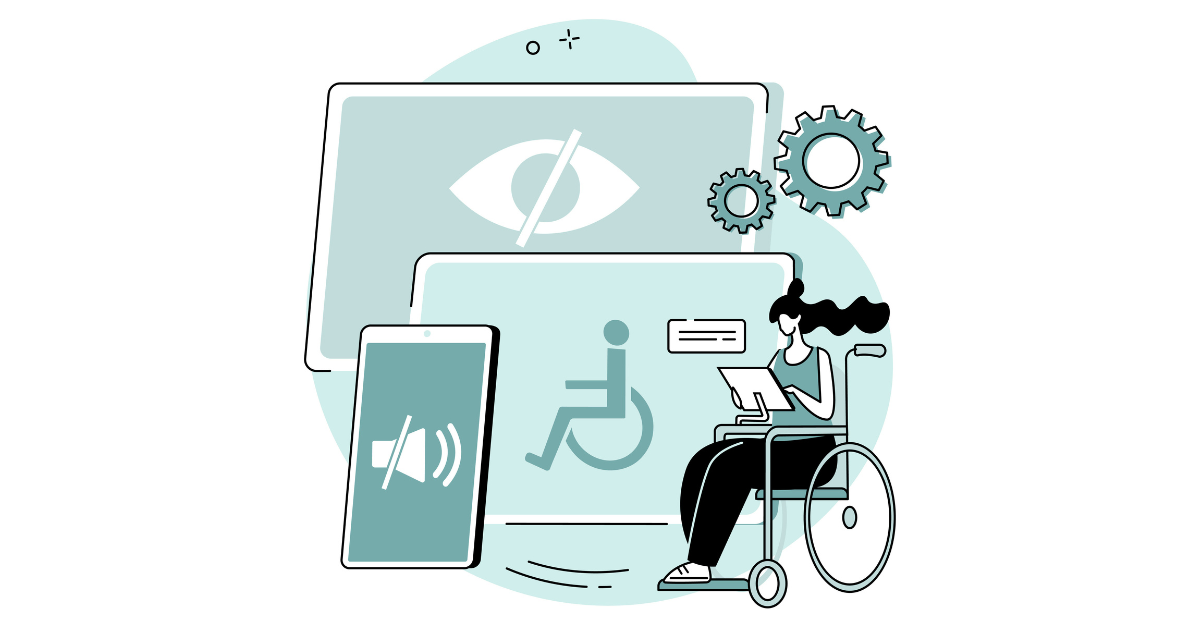The title of this blog post is more than a little understated. If you’ve ever been excluded from participating in an event, visiting a store, restaurant, or attraction, or simply felt you weren’t welcome somewhere because you found it difficult or impossible to access a service. In that case, you’ll know that accessibility isn’t important. It’s essential.
Accessibility isn’t just essential in the real world. It matters a great deal in the digital environment. This is especially true when you are providing digital services that individuals might not be able to access any other way. And yes, these include the kind of services your business offers.
Accessibility is an essential business strategy for so many reasons. This post will cover three of the most important (essential) reasons your online business needs to work on its accessibility.
1. Accessibility is a Legal Requirement
We’ll start with the one thing all businesses should be aware of — the law. Accessibility isn’t a privilege. It’s a legal requirement. In the US, online accessibility is covered by the Americans with Disabilities Act (ADA) which came into law in 1990. The ADA prohibits discrimination against individuals with disabilities in all areas of public life, including jobs, schools, transportation, and all public and private places that are open to the general public (this includes your website, email marketing campaigns, and apps).
Failure to comply with ADA regulations can result in your organization being sued by individuals and campaigning groups demanding great accessibility.
Numerous big names have been hit with lawsuits following acquisitions of ignoring ADA accessibility rules. These include Amazon, Burger King, Domino’s Pizza, Fox News Network, Nike, and even Beyoncé Knowles (Park Entertainment).
These lawsuits typically revolve around issues with websites not being accessible to users with visual impairments who rely on screen readers or braille displays to engage with online services. For example, in the action brought against the Fox News Network, the company was criticized for lacking alt text for images and links and redundant or empty links that impacted keyboard-based navigation aids for blind and visually impaired users.
ADA non-compliance will not only potentially damage your reputation as your name is dragged through the courts, but it can also be costly. Federal law allows fines of up to $75,000 for the first ADA violation and $150,000 for any additional violations. In addition, further penalties may be handed out by individual states and local governments, which may insist businesses comply with a higher standard of accessibility than the ADA requires.
2. Accessibility Makes Good Commercial Sense
Approximately 12 million people over 40 in the United States have some form of visual impairment, with more than one million considered legally blind. As the population ages, it is expected that conditions like diabetes will have a negative impact on an increasing number of people’s vision.
No matter how you add up the numbers, marketers who ignore accessibility are turning their backs on a sizable and potentially lucrative audience.
From a commercial standpoint, you want to be easy to do business with, and your digital doors should be open to everyone.
3. Accessibility and SEO Go Hand in Hand
When you consider the technology used by visually impaired people to read your website content in much the same way as Google crawls and indexes your pages, accessibility begins to look a lot like SEO best practice.
All of the strategies that make your website discoverable on the major search engines make your website more accessible. This includes incorporating the following elements in your page design:
- Real text instead of graphic representations of text that computer systems cannot read
- Proper page structure with careful use of <H1>, <H2>, and <H3> tags to aid user experience
- Descriptive ALT tags to describe the images on your website or email
Although accessibility and SEO have very different objectives, it’s worth remembering that if your site isn’t optimized for SEO and cannot be found, can it ever be considered accessible?
Accessible Design is Good for Everyone
Accessible design, which takes into account many of the topics discussed in this article, along with careful consideration of concepts like color theory or enabling the user to switch to dark mode, can mean the difference between someone sticking around and potentially becoming a customer or bouncing off your website.
As the name suggests, accessibility will never prevent anyone from accessing your online services. On the contrary, it can only ever enhance everything you do. So even if it wasn’t a legal requirement, it just makes good sense for everyone to incorporate accessibility in all of their campaign activities.
Learn More
To learn more about how the marketing experts at emfluence can help your business create more accessible routes for your customers to discover your products or services, contact us today at expert@emfluence.com.



